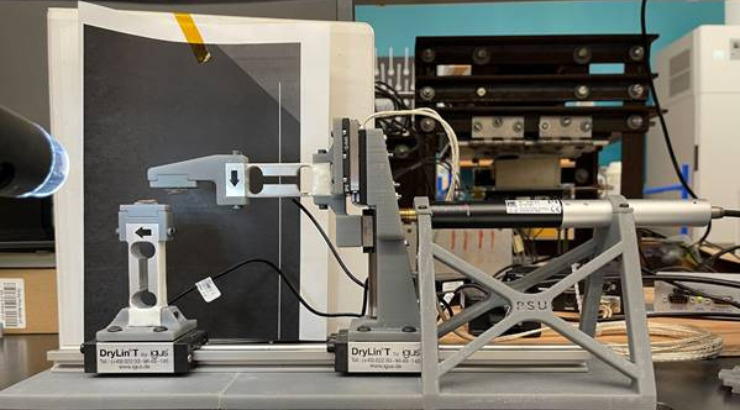Characterization of Mechanical Biomass Particle-Particle and Particle-Wall Interactions
ID# 2023-5609
Technology Summary
The inventors have developed an interparticle mechanics tester (IPMT) capable of accommodating biomass particles and a test protocol to determine friction and adhesion properties. This allows one to be able to determine which components of feedstock may need to be removed or reduced to achieve the desired flow characteristics. Another asset of this technology is the ability for one test run to produce multiple measurements, alleviating the requirement to conduct separate tests to determine friction and adhesion properties. The tester is easily adjustable to handle particle sizes or shape that are typical for milled biomass.
Application & Market Utility
Crop residue is a viable biomass source due to its abundance and use in integrated biorefineries. Corn stover is an example of such crop residue left after corn has been harvested. There is a current desire to implement biofuel technologies at an industrial scale. This poses a financial risk due to the misrepresentation of physical, chemical, and mechanical variabilities in effective lignocellulosic biomass handling and feeding. As of 2016, total biofuel production only reached 7% of the expected 58 billion gallons per year design capacity. The challenges in handling biomass contribute to this shortfall significantly. These challenges arise from variations in particle interactions within and among the fractions of different feedstocks or tissue types. There is a need for understanding interparticle mechanics associated with each corn stover fraction as it provides valuable information for understanding the overall poor flow behavior of milled corn stover. Furthermore, the information will help identify fractions that may be responsible for the poor flowability behavior of comingled corn stover. Addressing the challenges related to handling biomass is crucial to adopt biomass as feedstocks for biofuel production at an industrial scale.
Next Steps
Next steps include licensing with the possibility of follow-on research on different feedstock and variations therein, such as moisture content/particle size, etc.

